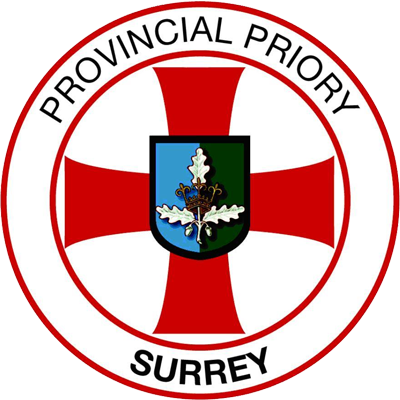The full title of this Order is – The United Religious, Military and Masonic Orders of the Temple and of St John of Jerusalem, Palestine, Rhodes and Malta, in England and Wales and its Provinces Overseas. The Order is governed by Great Priory in London.
The earliest reference to this Masonic Order occurred at around 1777, but it was not until 1845 that the ritual was standardised and the order steadily expanded. Today there are over 700 Preceptories on the roll of The Great Priory of England and Wales and Provinces Overseas. Whilst there is no claim to any historical connection to the medieval Military Orders of this name, the ritual is based around its history and exploits and the "Rule" of the Order given to them by the Pope.
Knights Templar
Meetings of this Order are held in a Preceptory and presided over by a Preceptor. The regalia is most impressive, and is based on the livery of our medieval counterparts: it comprises of a mantle, tunic, cap, sash, cross, star, gauntlets, belt and sword.
This degree commemorates a band of knights who were granted refuge within the sacred precincts of King Solomon's Temple by Baldwin II, King of Jerusalem in 1118. A Candidate for Installation is admitted in the character and garb of a pilgrim and is required, symbolically, to undergo a period of pilgrimage and warfare culminating in taking the vows of a crusader. Having conducted himself courageously, he is then instructed how penance and meditation will prepare him for Christian Knighthood. Finally, he is received, clothed, armed and proclaimed a Knight of the Temple.
Knights of St John of Jerusalem, Palestine, Rhodes and Malta
Knights of St Paul
This is the short introductory, or passing, degree which precedes the ceremony of becoming a Knight of Malta, and is held in a Chapter of the Knights of St Paul. In this degree we learn of the travels of St Paul and how he arrived on the island of Malta.
Knights of Malta
Meetings of this Order are held in a Priory and presided over by a Prior. The Priory is normally only opened either to receive new knights of the Order, or at the installation of the new Prior. This degree of Christian Knighthood recounts the history of the Knights of Malta and their long struggle against the unenlightened. It traces their progress from the time they left Jerusalem until they reached their final home on the island of Malta. The attention of Candidates is drawn to the presence of five officers who assume the role of the personal staff of the Grand Master, while the other officers represent the heads of the eight Langues or Tongues, into which the ancient Order was divided. An explanation of the traditional history is given as the final part of the ceremony. The ritual has esoteric meaning and invites the Candidate to reflect on the meaning of mystical resurrection.

